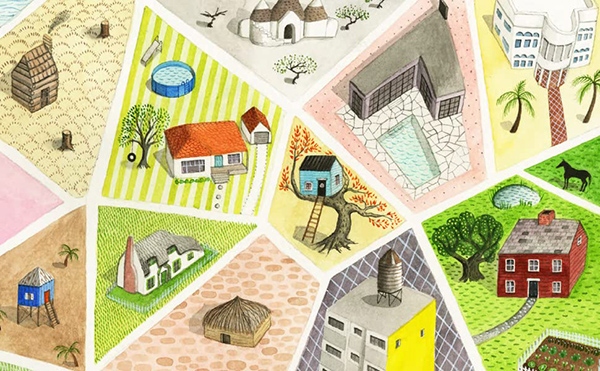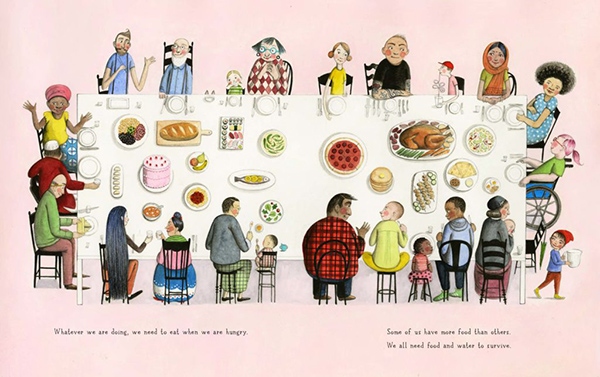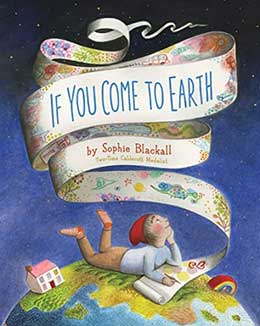I love reading wordless picture books and picture books that are very busy (think Richard Scarry’s books) with small groups of kids. The conversations are always amazing. At some point I can stop asking question and just sit back as they huddle over the book, offering stories, pointing things out, discussing.
My latest favorite of this “genre” is Sophie Blackall’s If You Come to Earth. I start reading this by holding the book up in the usual storytime fashion so they can see the pictures. The text is sparse and the pictures are large.
Dear Visitor from Outer Space,
If you come to Earth,
Here’s what you need to know.
Directions are given as to how to find us — ours is the greeny-blue planet with a tiny moon. Then there are a couple of spreads indicating the vastness of our world. Within a couple pages, the “camera view” tightens and suddenly we’re looking at the many different homes we live in and the wonderfully different family configurations we have.

Published by Chronicle Books, 2020.
It’s at this point that the conversation kicks in and I have to lay the book flat on the ground so we can all look at it and point out details, sometimes comparing them to our houses and families, sometimes to someone else’s. And then we move on to the people.
There are more than seven billion people on Earth.
We all have bodies.
But every body is different.
A few spreads later there are faces and the claim that we sometimes show our feelings on our faces. This consistently leads to raucous conversation and demonstration of feelings on our faces.
This book shows some of the many ways we dress on planet earth. It shows our weather in all of its extremes, the immense variety of transportation options we have, and what we do with leisure time and work time. Spread after spread is filled with beauty and particularity.
There’s a spread with a huge table with a diverse array of people around it and food on it — a favorite of mine!

Published by Chronicle Books, 2020.
The pages that show classifications — things that are part of nature and things that are made by people, things that are big and things that are small — always induce list making of the things that aren’t on the pages. Because Ms. Blackall can’t draw it all.
This book is a celebration of creation and humanity. I love the energy it produces when I read it to kids. Once things get rolling, I hardly need do anything besides read the quiet text and occasionally remind them “Gentle with the book, please … ” as they pull it closer for a better look.
Perhaps the thing I like most is that the child who is the narrator of the book is pictured drawing the beauty and similarities and differences on a long sheet of paper, the kind that comes on a roll.
So I unroll a Very Long Sheet of Paper and invite them to work together to fill it with all the things they thought of while reading If You Come to Earth. This can be a project added to over a number of storytimes. It can be a project at home that creates a wonderful table runner and chance to talk about all the wonders of our world. The excellent conversation continues as long as the mural drawing lasts.


This is such a wonderful idea! Can’t wait to do it with my grandkids. (I’m enjoying Blackall’s new “Farmhouse” right now.)